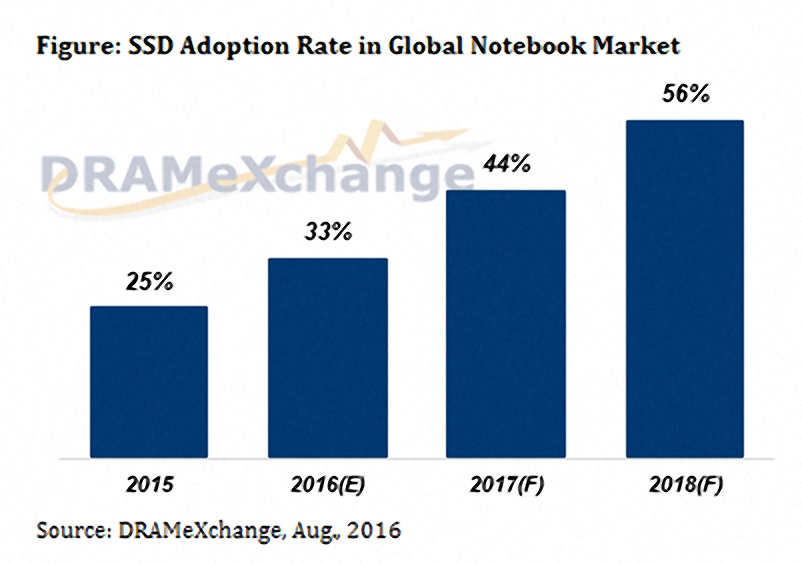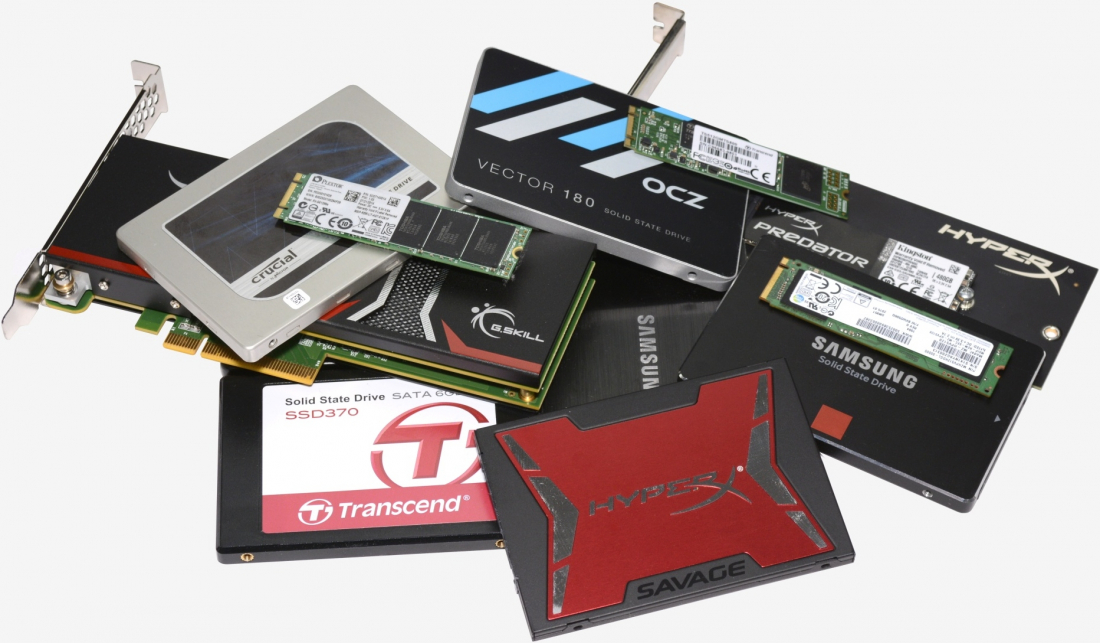If you've shopped for a new notebook recently, you're well aware of the fact that solid state storage is becoming much more commonplace - a trend that's only going to accelerate at a rapid pace over the coming years.
DRAMeXchange, a division of market analyst TrendForce, said in its most recent report that SSD adoption rate in the global notebook market hit 25 percent last year. The firm estimates that to climb to 33 percent this year with a forecast of 44 percent and 56 percent by 2017 and 2018, respectively.
In the immediate future (the third quarter), DRAMeXchange says NAND flash will be in short supply and TLC flash memory prices will remain high. As such, total client-grade SSD shipments for the quarter are projected to increase by around two to three percent.

Solid state drives as we know them today first appeared about a decade ago. Early drives were incredibly expensive and you had to jump through a ton of hoops to get the most out of them as operating systems like Windows simply weren't designed with them in mind. While performance in some scenarios was impressive, users also had to contend with issues and limitations like subpar endurance (both in terms of health and performance) as well as small capacities.
A decade of refinements has completely changed the game. Sure, you'll still pay more for a SSD versus a HDD and drives will wear out over time but the performance they afford is absolutely worth the investment.
